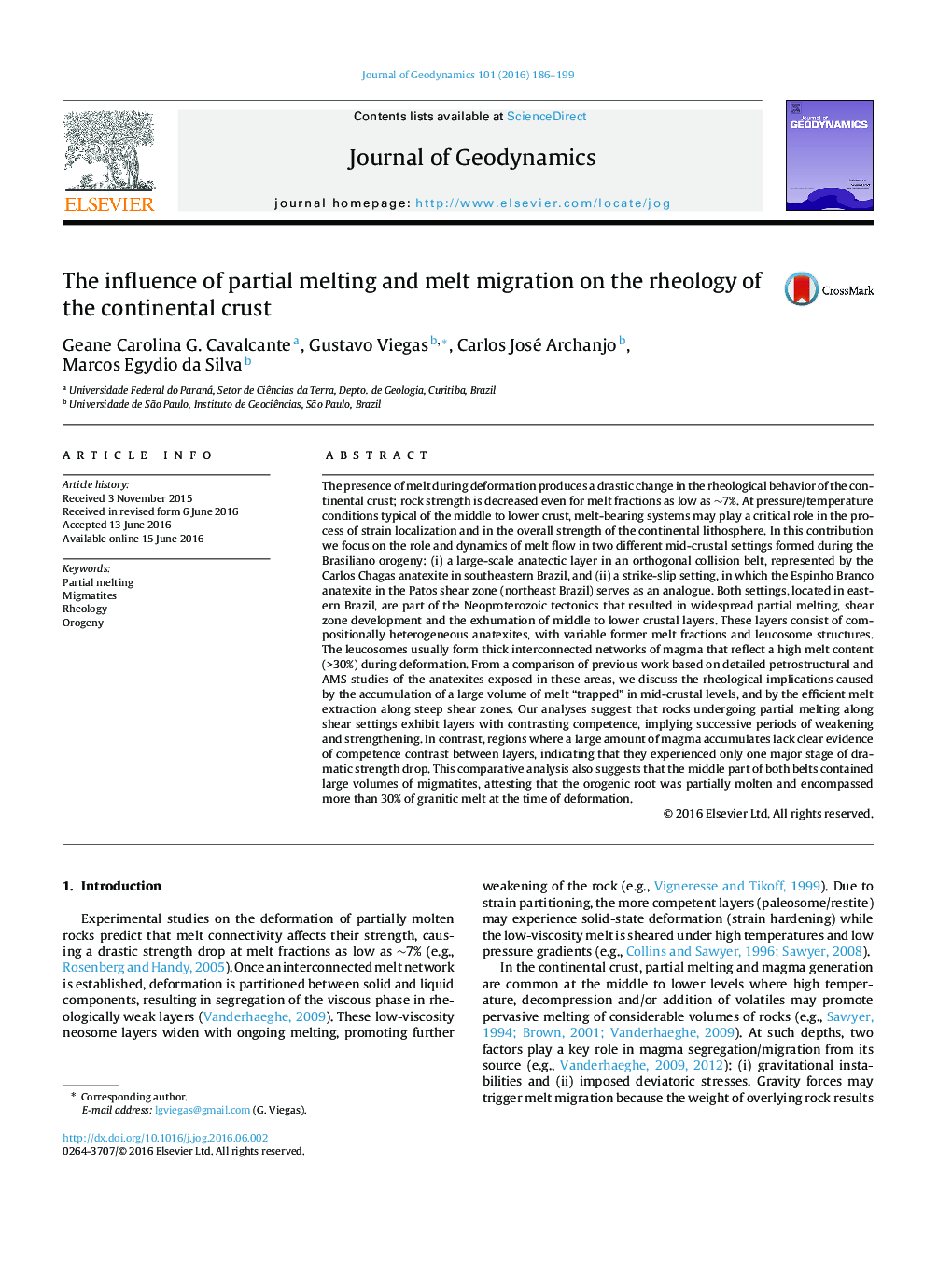| کد مقاله | کد نشریه | سال انتشار | مقاله انگلیسی | نسخه تمام متن |
|---|---|---|---|---|
| 4687924 | 1635749 | 2016 | 14 صفحه PDF | دانلود رایگان |
The presence of melt during deformation produces a drastic change in the rheological behavior of the continental crust; rock strength is decreased even for melt fractions as low as ∼7%. At pressure/temperature conditions typical of the middle to lower crust, melt-bearing systems may play a critical role in the process of strain localization and in the overall strength of the continental lithosphere. In this contribution we focus on the role and dynamics of melt flow in two different mid-crustal settings formed during the Brasiliano orogeny: (i) a large-scale anatectic layer in an orthogonal collision belt, represented by the Carlos Chagas anatexite in southeastern Brazil, and (ii) a strike-slip setting, in which the Espinho Branco anatexite in the Patos shear zone (northeast Brazil) serves as an analogue. Both settings, located in eastern Brazil, are part of the Neoproterozoic tectonics that resulted in widespread partial melting, shear zone development and the exhumation of middle to lower crustal layers. These layers consist of compositionally heterogeneous anatexites, with variable former melt fractions and leucosome structures. The leucosomes usually form thick interconnected networks of magma that reflect a high melt content (>30%) during deformation. From a comparison of previous work based on detailed petrostructural and AMS studies of the anatexites exposed in these areas, we discuss the rheological implications caused by the accumulation of a large volume of melt “trapped” in mid-crustal levels, and by the efficient melt extraction along steep shear zones. Our analyses suggest that rocks undergoing partial melting along shear settings exhibit layers with contrasting competence, implying successive periods of weakening and strengthening. In contrast, regions where a large amount of magma accumulates lack clear evidence of competence contrast between layers, indicating that they experienced only one major stage of dramatic strength drop. This comparative analysis also suggests that the middle part of both belts contained large volumes of migmatites, attesting that the orogenic root was partially molten and encompassed more than 30% of granitic melt at the time of deformation.
Journal: Journal of Geodynamics - Volume 101, November 2016, Pages 186–199
